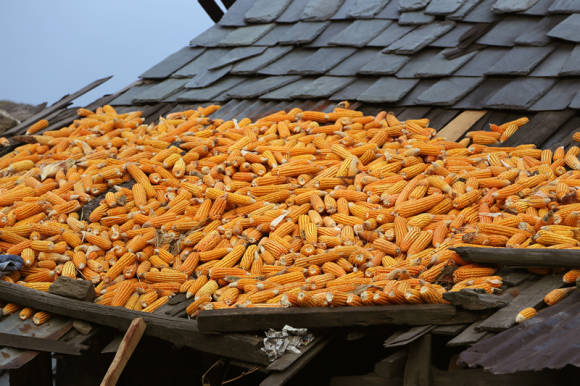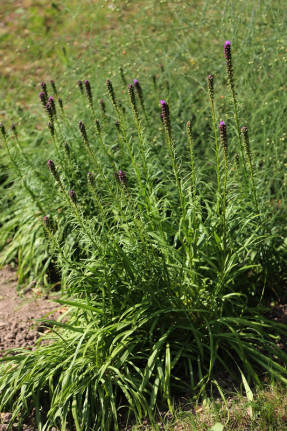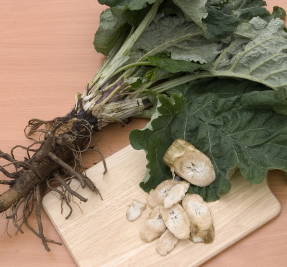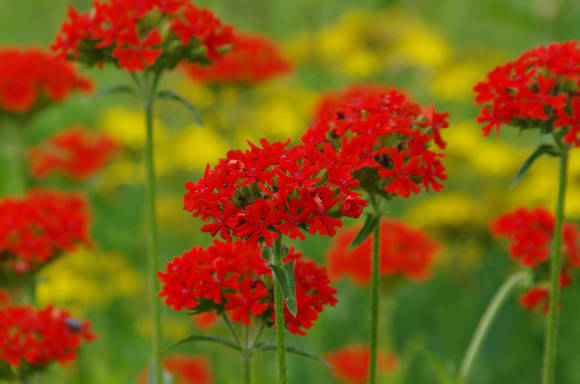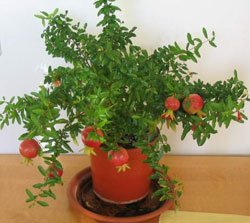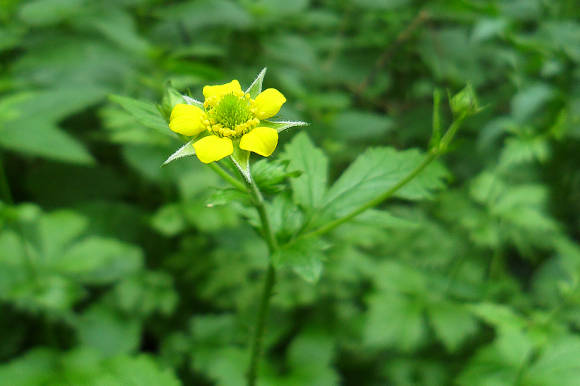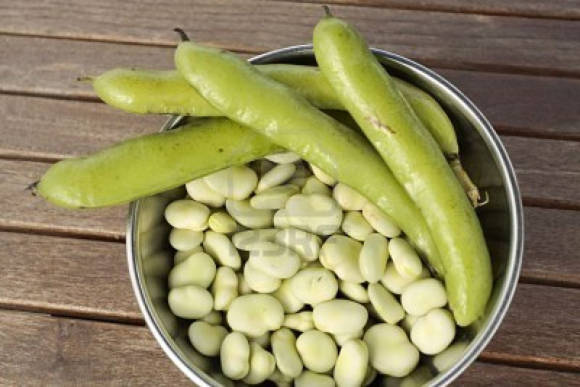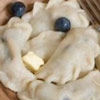For many trees and shrubs, green cuttings are one of the most productive methods of vegetative propagation. In June - early July, when the plants are in the active growth phase, the best time for green propagation is coming.
With the help of green cuttings, many trees and shrubs can be propagated, but it must be borne in mind that the rooting ability of cuttings depends on the type and variety of the plant.
The method of propagation by green cuttings is based on the ability of stem cuttings to form adventitious roots, which is expressed to varying degrees in different plants. The greatest differentiation ability is possessed by evolutionarily younger herbaceous perennials and shrubs, to a lesser extent - tree species, especially the most ancient conifers in origin, although among them there are species with a high capacity for rooting by green cuttings. Vines (clematis, grapes, maiden grapes, actinidia, petiolate hydrangea), many shrubs (mock-mushrooms, lilacs, hydrangeas, privet, honeysuckle) are easily rooted. For roses, it is advisable to use cuttings only for small-leaved groups, the main assortment of varietal roses grows better and hibernates on the rootstock.
The process of formation of adventitious roots on cuttings begins with the formation of callus as a reaction to injury. Callus gives cuttings resistance to adverse environmental conditions and the penetration of infections. Callus formation is most pronounced in hard-to-root plants.

Harvesting cuttings
Green cuttings are leafy parts of the stem with one or more buds. It is preferable to take cuttings from young plants; very old mother plants are preliminarily subjected to rejuvenating pruning. The best material for cuttings are lateral shoots that form on last year's growths in the lower, but well-lit part of the crown, which have large developed buds and do not carry signs of disease. Upright shoots as well as ankle tops will take less root, as they do not contain enough carbohydrates for successful rooting.
In the process of harvesting cuttings, it is important to ensure the preservation of moisture in the tissues, on which the success of rooting largely depends. Shoots are cut early in the morning, when all plant tissues are saturated with moisture. At all stages of working with cuttings, they should not be allowed to dry out; cut shoots should be immediately placed in the water in the shade. Cutting cuttings start as quickly as possible. If transportation is required, cuttings, without spraying with water, are placed obliquely in a container with wet sphagnum. In such packaging, they can be stored in the refrigerator, but the total storage duration should not exceed 2 days.
Cuttings are cut 8-12 cm long with two or three internodes; plants with short internodes may have more. In a number of plants - roses, rhododendrons, hydrangeas, grapes, mock orange, lilac cuttings with one axillary bud, called leaf buds, take root well. Such cuttings allow you to get a large amount of planting material of valuable species and varieties with a small amount of material for cuttings. When propagating by cuttings at the optimal time, it is better to use the middle and lower, in later periods - the upper part of the shoot. Cutting is done on a hard board with a very sharp tool - a grafting knife or a blade that does not squeeze the tissue. The lower cut is made oblique to increase the suction surface, 1 cm below the kidney, the upper one is straight, directly above the kidney.In large-leaved plants (for example, lilac, viburnum, vesicle), to reduce the area of evaporation, the leaf blades are cut by ½ or 1/3, but in difficult-to-root, as well as variegated, yellow-leaved, purple forms that have a low chlorophyll content, this technique should be used carefully, since assimilation may not be sufficient to ensure root formation. Truncation of leaf blades would be good to do even on the eve of cutting the cuttings, this will also reduce moisture loss. The cuttings are sprayed with water and placed under a non-woven covering material before planting to prevent them from withering.
To increase the efficiency of rooting, simple techniques are used: incising the bark near the buds by 2 mm, bending the branches, banding with copper wire or etiolating the shoots. All these measures help to prevent the outflow of carbohydrates and growth substances - auxins from the shoots. Etiolation is carried out by tying the shoot with foil, paper or black non-woven material 2-3 weeks before grafting. In the shoot, a redistribution of metabolism occurs and the effectiveness of rooting increases.
Methods to improve rooting efficiency
It is known that the process of root regeneration is regulated by growth substances - auxins, carbohydrates and nitrogenous substances. In many species and varieties, under the influence of growth regulators, the percentage of rooting cuttings, the number of roots, the quality of plants increase, and the rooting time is reduced. Some hard-to-root crops become easily rooted, but sometimes, depending on the biological characteristics of a particular species or variety, there may be no response to stimulants.
Good root stimulants are:
- Heteroauxin (indoleacetic acid (IAA)) - from 50 to 200 mg / l,
- Kornevin (indolylbutyric acid (IMA)) - 1 g / l of water,
- Zircon (a mixture of hydroxycinnamic acids) - 1 ml / l of water.
Treatment with stimulants should be done in the dark, at a temperature of + 18 ... + 22 degrees. The cuttings are immersed in the solution so that the leaves are not processed. The concentration of the solution and the exposure time must be kept exactly, exceeding them may lead not to an increase in the effect, but to a toxic effect. Therefore, it is better to use Kornevin in a solution and maintain a strict exposure for 16-20 hours, and not dust the cuttings with it.
Planting cuttings
Ready cuttings are planted in pre-prepared spreading ridges, which are arranged in the shade (in most cases, the optimal illumination for successful rooting is 50-70%). Rooting proceeds best when the substrate temperature is 3-5 degrees higher than the ambient temperature. To create such conditions, biofuel is laid on the bottom of the ridge - horse manure with a layer of 25-30 cm, which, decomposing, generates heat and provides lower heating to the cuttings. Next, a fertile soil is poured with a layer of 15 cm, and finally, a substrate for rooting with a layer of 3-4 cm.As such a substrate, you can use a mixture of neutral peat with sand in a ratio of 1: 1 or 2: 1 with the addition of finely chopped sphagnum moss, which has moisture retaining and bactericidal properties. It is useful to shed the substrate with one of the drugs - Radiance, Baikal, Renaissance, Fitosporin to suppress pathogenic microflora. The same preparations can be used in the process of caring for cuttings, adding to the irrigation water once every 1-2 weeks.
Cuttings are planted at a distance of 5-7 cm from each other to a depth of 1.5-2 cm. On top of the ridge is covered with glass, plastic wrap or non-woven covering material in arcs at a height of 25 cm from the cuttings. Each of these materials has its own drawbacks - in the heat, under polyethylene and glass, the temperature can rise too much, and it is more difficult to maintain high humidity under non-woven covering material. For most tree and shrub species, the optimum temperature is + 20 ... + 26 degrees and humidity 80-90%. In industrial environments, moisture is maintained by fogging machines that spray moisture at regular intervals.At home, cuttings are sprayed with water several times a day. Cuttings should be regularly inspected, and fallen leaves and loose specimens should be removed.

With the beginning of rooting, the plantings are aired, opening the film first for 1-2 hours, each time increasing the time, the number of sprays is reduced. After hardening the rooted cuttings, the film is removed. A month later, they are fed with a liquid complex mineral fertilizer.
A small number of cuttings can be rooted in boxes by adding 8-10 cm of soil and 1.5-2 cm of river sand. 1-3 cuttings can be rooted in a pot by covering with a clear cut-bottom plastic bottle. Removing the cap from the neck, it is convenient to ventilate. It is convenient to move pots or boxes with rooted cuttings for the winter to the basement for the winter.
Cuttings rooted in the cuttings are left in the ground, covered with a dry leaf for the winter, or they are dug up and stored in the refrigerator or dug in the basement, at a temperature of + 1 ... + 2 degrees.
In the spring, the cuttings are transplanted into the "school" for 2-3 years for growing, then transplanted to a permanent place.
The table shows data on the effectiveness of green cuttings in different crops *:
Genus | Type of plant | Cuttings harvesting period | Rooting temperature | Rooting percentage | Duration of rooting, days | The need for stimulants of root formation |
Roses | polyanthus, climbing small-leaved, patio, miniature | Budding - the beginning of flowering (semi-lignified cuttings) | + 23 + 260С | on average, 83.9%, in some varieties up to 100% | from 10-15 to 28 | |
Lilac | Common lilac: Early varieties Late varieties C. Hungarian S. Wolf C. hairy S. Zvyagintseva | Fading phase Flowering phase Fading, but not stopping the growth of shoots | + 24 + 270С | up to 90-100% | IMK 25-50 g / l | |
Clematis | Budding - the beginning of flowering (cuttings from the middle part of the shoot) | + 18 + 220С | 40-100% depending on the grade | 25-30 | IMK 25-30 g / l, 12-24 h | |
Chubushnik | Attenuation of shoot growth - the beginning of flowering | up to 90-100% | 15-25 | - | ||
Spirea | Spring flowering species Summer flowering species | Beginning - ser. VI Con. VI - mid. Vii | from 30 to 100% for different species | 12-25 | IMC 25-100 g / l increases rooting by 10-15% | |
Forsythia | F. ovoid | Attenuation of shoot growth (first half of VI) | + 21 + 260С | up to 70% | 20-35 | IMC 25 g / l |
Viburnum | K. ordinary "Roseum" (Buldenezh) K. gordovina | Mass flowering period | + 22 + 260С | 100% 91% | 14-21 | IMK 25-50 g / l or heteroauxin 50-100 g / l |
Cotoneaster | K. brilliant K. horizontal | Con. VI - early. Vii | 52% 100% | 0.005% BCI 0.01% BCI | ||
Action | D. rough | Beginning VI - mid. Vii | + 15 + 220С | 100% | 17-25 | 0.01% BCI, 16 h |
Privet | B. ordinary | Ser. VI - early. Vii | + 10 + 250C | 80-90% | 14-21 | 0.01% BCI |
Derain | D. white D. male D. offspring | 100% 79% 90% | 0.002% BCI 0.05% BCI - | |||
Honeysuckle | J. offspring J. Hekroth J. Tatar J. blue (F. edible) | End of shoot growth | 20-25 ° C | 100% 100% 100% 90% | 11-20 | - - - - |
Hydrangea | G. paniculata G, tree-like G. Bretschneider G. petershkovaya | VI - VII | 80-100% 100% 38% 100% | 20-23 | Responsive to IMC - 0.05% BCI - | |
Rhododendron | R. pontic R. katevbinsky R. Japanese | VII - IX | 72-76% | 50-70 | IMC 50 mg / l Powder. 2% IMC 0.005% BCI, 17 h | |
Actinidia | A. acute A. kolomikta | 100% | - | |||
Scumpia | S. tannery | Con. VI - early. Vii | 36% | 20-23 | 0.005% BCI | |
Barberry | B. Thunberg B. ordinary | VI | 33-100% 56% | - 0.05% BCI | ||
Colquitia | K. adorable | Beginning Vii | 46% | |||
Weigela | B. early B, Middendorf B. hybrid | 100% | 0.01% BCI | |||
Euonymus | B. European B. winged | 45% 90% | 45 | 0.01% BCI 0.01% BCI | ||
Currant | C. alpine S. golden | 83% 100% | - - | |||
Chaenomeles | H. Japanese | 100% | 0.01% BCI, 24 h | |||
Cotoneaster | K. horizontal K. brilliant | up to 100% 52% | up to 28 | 0.01% BCI, 16 h 0.005% BCI, 16 h | ||
Keriya | K. japanese | Up to 100% | 0.005% BCI, 16 h | |||
Kuril tea | K.ch. bushy | 100% | - | |||
Juniper | M. Cossack M. virginsky | 70-90% 40-60% | IMC 25 mg / l | |||
Thuja | T. western | VI | 30-60% | 30-60 | IMC 200 mg / l | |
Spruce | E. prickly | VI - VII | 50% | IMC 100 mg / l |
* The table is compiled according to the data of GBS and TSKhA.
